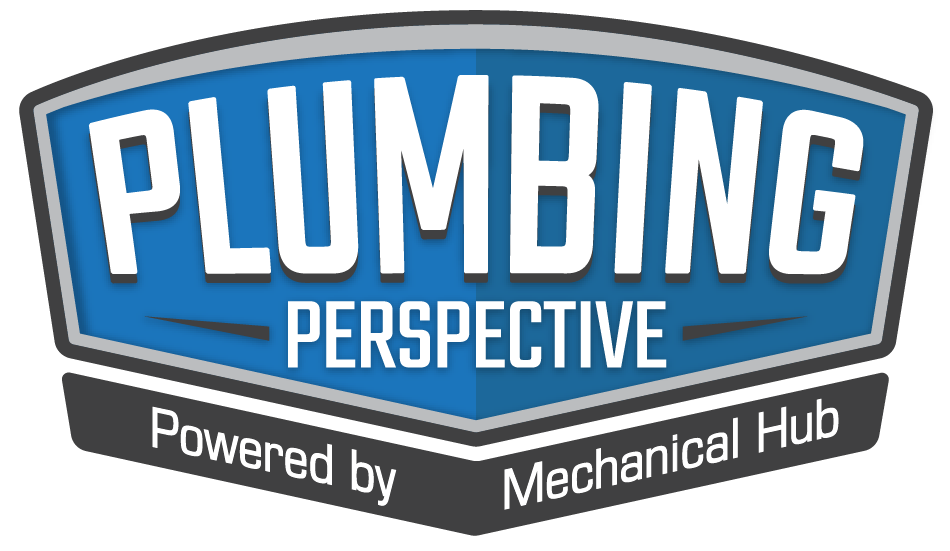Bradford White Water Heaters is proud to announce that its proprietary Vitraglas® tank lining has been infused with Microban®, a built-in antimicrobial technology to provide additional protection against the growth of bacteria, mold and mildew on the surface of the lining. Bradford White water heaters are the only water heating products that offer residential and Read more
Water Heaters

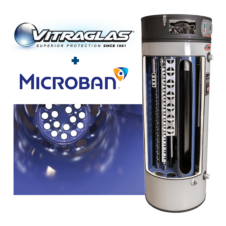 Bradford White Water Heaters is proud to announce that its proprietary Vitraglas® tank lining has been infused with Microban®, a built-in antimicrobial technology to provide additional protection against the growth of bacteria, mold and mildew on the surface of the lining. Bradford White water heaters are the only water heating products that offer residential and commercial consumers this additional level of tank protection at no additional charge. The silver-based additive is developed and provided by Microban®, a trusted brand and leader in antimicrobial technologies since 1984. Their technologies can be found in thousands of consumer and industrial products around the world, including a variety of plumbing fixtures and household appliances.
Bradford White Water Heaters is proud to announce that its proprietary Vitraglas® tank lining has been infused with Microban®, a built-in antimicrobial technology to provide additional protection against the growth of bacteria, mold and mildew on the surface of the lining. Bradford White water heaters are the only water heating products that offer residential and commercial consumers this additional level of tank protection at no additional charge. The silver-based additive is developed and provided by Microban®, a trusted brand and leader in antimicrobial technologies since 1984. Their technologies can be found in thousands of consumer and industrial products around the world, including a variety of plumbing fixtures and household appliances.
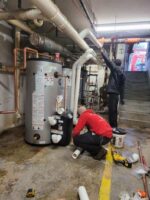
Peak Season Plumbing Problem During winter, not having hot water can be an aggravating experience for any homeowner. But if a hotel owner must deal with hot water interruption during the holiday season, the issue becomes much more disruptive and severe. A hotel in the Philadelphia area with 88 rooms faced this problem just before Read more
Peak Season Plumbing Problem
During winter, not having hot water can be an aggravating experience for any homeowner. But if a hotel owner must deal with hot water interruption during the holiday season, the issue becomes much more disruptive and severe.
A hotel in the Philadelphia area with 88 rooms faced this problem just before Christmas when its water heating system failed. Normally, plumbing contractors are used to emergency service requests, but with a snowstorm on the way, an increased number of guests and the holidays arriving, this situation required particularly quick action.
The team at Affordable Fixes Heating Cooling Plumbing completed the task by installing two HTP Phoenix tanks, with each holding a capacity of 119 gallons and 199K BTU respectively. Tackling this task required the team to remove four faulty water heaters that were leaking and generating carbon monoxide in the building.
“There are always challenges but replacing four and putting in two meant we had to put in a new exhaust, re-pipe the system, and re-do the electric units,’’ said Val Savkin, owner of Affordable Fixes Heating Cooling Plumbing. “It was supposed to be a one-day job. It took three, which was very efficient given the scope of the project.”
Due to prior communication with the building owner, Savkin knew the condition of the system. When he received a call shortly preceding he holiday season, he knew his help would be needed.
“This was an emergency project,’’ Savkin said. “The water heaters that had been in place had deteriorated. They couldn’t be repaired any longer. It was just wear and tear, they were outdated. Just two days before Christmas we were out there in the snow getting the project finalized.”
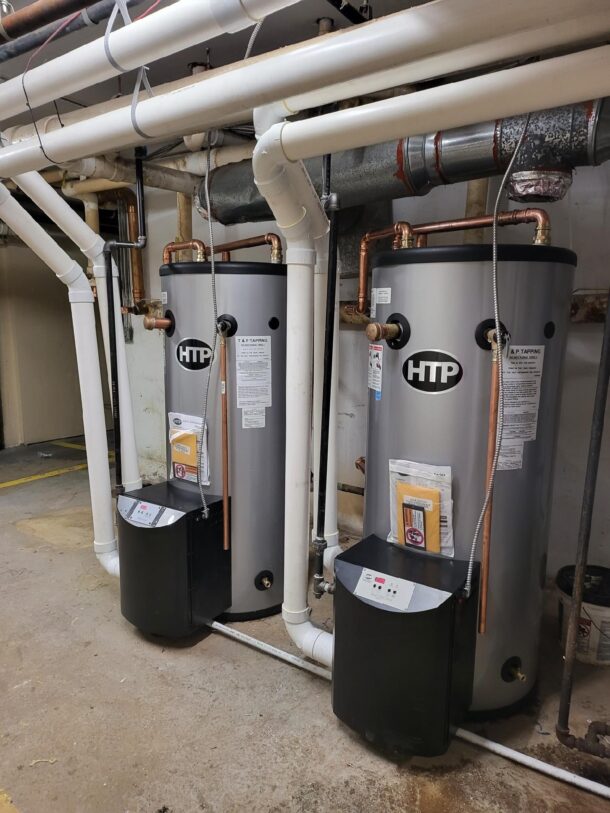
Photos by Affordable Fixes Heating Cooling Plumbing
Before Savkin chose the HTP Phoenix units, he explored other possibilities. “These HTP units were new to us, but we wanted a high efficiency, fast recovery water heater. If we had used another system, we would have to put in at least 3 units,’’ Savkin said. “We saved the customer about $12,000 by selecting this system.”
To complete the in-depth project, Savkin deployed a team of four plumbers and a debris scrapper. The initial phase involved the deconstruction and removal of the current units.
The second step proved to be just as demanding as the first step. Electrical wiring, new exhaust and gas lines were all components required for the second phase, due to the new system requiring fewer heating units.
John Monaghan, a HTP National Training Manager assisted the project by evaluating the building’s heat requirements and proposed installing two Phoenix 119-gallon tanks. “That not only saved the building owner a lot of money, but it also allowed us make the installation a little bit quicker,” Monaghan said.
Placing the tanks in the hotel’s basement was no easy task throughout the setup process. “It was a very tight fit. We were fortunate to have an elevator handy,’’ Savkin said. “We had to disassemble the new units, put them in a box, put them in the elevator and then re-assemble them. If there had not been an elevator, we would’ve gone old school and roped them down.”
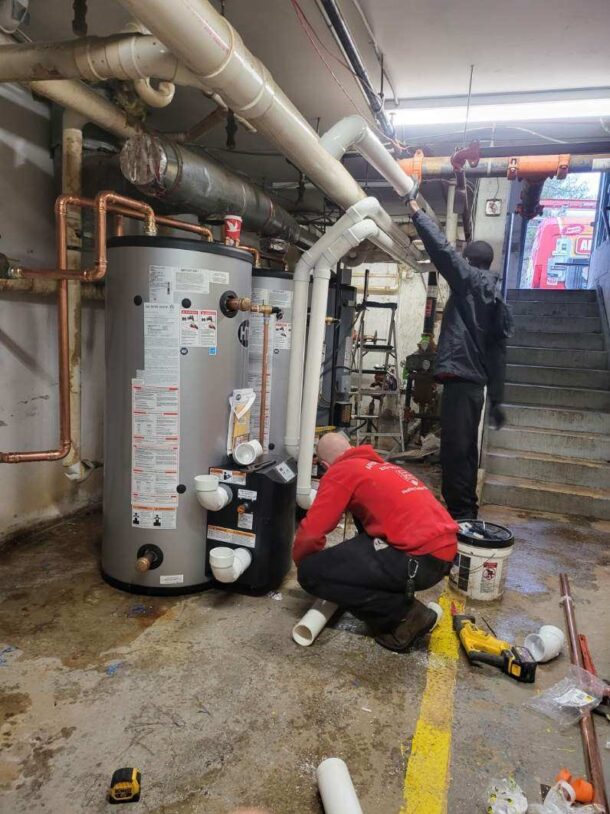
Workers from Affordable Fixes Heating Cooling Plumbing removed four water heaters and installed two HTP Phoenix 119 gallon tanks. Efficiency, durability and fast recovery factored into the decision to install the HTP products.
The selection of the HTP Phoenix water heaters was influenced by several reasons. The water heaters feature energy efficiency, durability and fast recovery that provides thermal comfort for hotel guests in a cost-effective way for the hotel owner.
“We didn’t know much about them, but we recently had training with them and I really liked their efficiency,’’ said Savkin, who has been in business in the Philadelphia area for more than three decades. “They were a great fit with a nice integrated control and easy to replace.”
Boasting a thermal efficiency rating of 96, the HTP Phoenix effectively uses 96 cents of every dollar towards heating purposes. On the other hand, a standard efficiency unit has a maximum capacity of a 60 percent efficiency rating, making the HTP Phoenix a significant upgrade. Operating at a 5:1 turndown ratio, the HTP Phoenix’s modulating burner delivers productive system efficiency even when the load is low.
To prevent corrosion, the HTP Phoenix comes with a 316L stainless steel tank. Furthermore, the unit includes a 7-year warranty for residential use and a 3-5-year warranty for commercial purposes.
“Most times you’ll get 8-12 years out of units, but like anything else it depends how much you take care of it,’’ Savkin said. “I could see these lasting 12-20 years. It’s all about the maintenance of the equipment, but it’s important to look at the water quality, too. The hardness and chemicals of the water has a lot to do with the longevity of the system.”
Receiving emergency service requests is typical for many plumbers, including Savkin. Having no access to heat or cold water will irritate any hospitality owner or homeowner, particularly during peak season.
“When we first looked at this project, we gave the owner a price and he didn’t get back to us right away,’’ Savkin said. “Then he called back and said he needed to have it done immediately. It’s an occupied hotel, and we are right around the corner. With the snow, the holidays and people traveling, this could have been a bad situation for him. We were glad to help him out and fix it quickly.”
Brian Giardina writes on a wide range of trade industry topics for publications throughout the United States.

Mechanical Hub kicks off its 2023 Industry Forecast series with good friend, Bruce Carnevale, President and CEO, Bradford White Corporation. You would think coming out of a global pandemic there might be signs of positive growth. But hold your horses, as they used to say. For the economy to back on the right track, it’s going Read more
Mechanical Hub kicks off its 2023 Industry Forecast series with good friend, Bruce Carnevale, President and CEO, Bradford White Corporation. You would think coming out of a global pandemic there might be signs of positive growth. But hold your horses, as they used to say. For the economy to back on the right track, it’s going to take some time, and steady leadership.
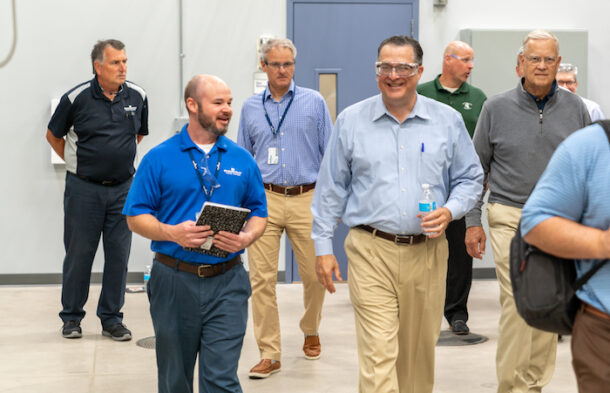
Bruce Carnevale, center, right, holding water bottle
MH: I’ve heard that the first half of 2023 might be a bit bumpy, how do you see 2023 shaking out and the short-term economy in general?
Carnevale: I’m actually a bit more concerned about the 2nd half of 2023, John. While most economic indicators are not good right now, some are headed in the right direction so there feels like there is a bit of stability for now. Even though it has moderated the past couple of months, inflation continues to be stubbornly high, but the jobs market had been surprisingly strong. I’m not sure everyone understands that when the inflation rate falls from 9.1% to 6.5% (for current US inflation info), that doesn’t mean prices have fallen. It means that prices are increasing at a lesser rate, but they are still increasing at over three times the Fed’s target rate!
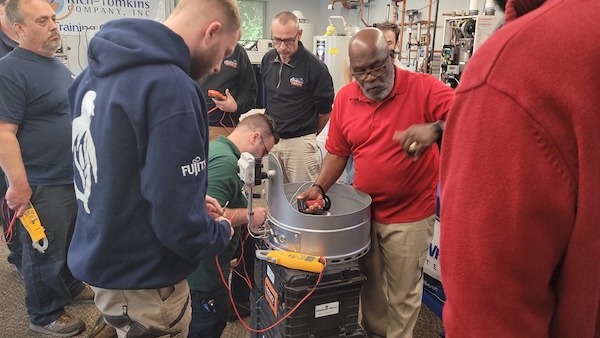
I believe that historically high prices have slowed demand, and helped slow the pace of inflation more so than the Fed’s rate increases have up until now. It takes time for the Fed’s actions to take hold, and I think we will see the impact of that later this year in the form of a significant slowdown. If not technically a recession, I think it will feel like one to the American consumer. I hope that the Fed becomes less aggressive with its 2023 rate increases.
I mentioned that the labor market has remained strong, but my sense is that is changing fast…every day we are hearing of new layoffs at some of the country’s largest employers. This is a clear indication of how much demand has slowed, and I think that will continue into the 2nd half of 2023.
MH: What causes you pause for concern? (Steady inflation, supply chain, housing starts, interest rates, foreign factors, etc.)
Carnevale: All of the above! But what concerns me most is labor availability. I think most companies would say the shortage of workers is still their number one business concern, despite all of the other challenges you mentioned. I am hopeful that the slow down in the labor market will bring the number of available workers and the number of job openings back to equilibrium.
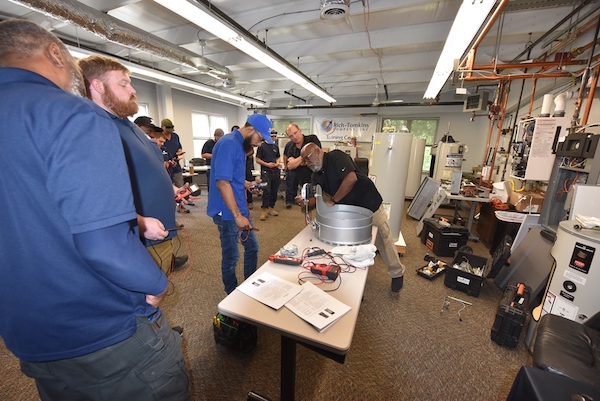
The global geopolitical instability also keeps me up at night. We all saw the effects of Russia’s invasion of Ukraine and the ensuing war. That continues to be impactful to supply chains and economies, especially in Europe. But there are several other hot spots in the world that could erupt, whether it be wars or new COVID outbreaks, and have dramatic impacts on the global economy and supply chains.
MH: Are you seeing any signs of positivity? If so, where?
Carnevale: Absolutely. I’m actually somewhat bullish for our business for 2023. As I’ve mentioned in articles and presentations over the last year and a half, we’ve been in a period of correction from the over buying of water heaters in 2020 and 2021, but the worst seems to be behind us. It is also great to re- engage with our customers and business partners in person, and their businesses have mostly normalized to what they were pre-pandemic.
MH: Without getting too deep into the weeds, how do regulations help or hinder the manufacturing process, and are there any significant ones coming down the pike of which contractors should be aware?
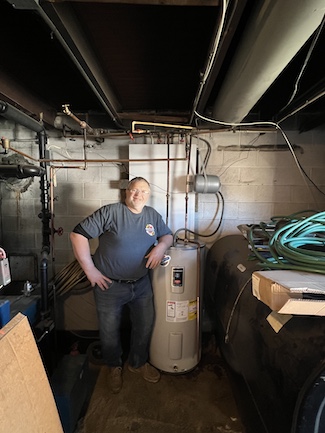 Carnevale: Really, John? How long do we have? If your question is specific to the impact on manufacturing processes, significant regulations which require manufacturers to build entirely new models are a huge challenge. Imagine that you have a factory which builds products that are currently compliant, and then five years from now, you have to build a completely different products to meet new regulations. That sounds like a sufficient amount of time, right? But you have to continue to produce the current product while you are re-tooling the factory to build new product. There is no practical way that you can just remove all the old equipment, roll in the new equipment, flip a switch to stop making the old models and start making the new models on the date the new regulations take effect. We expect that the Department of Energy’s upcoming NAECA 4 regulation will require us to do just that. We’ll figure it out, but it’s a significant challenge and it will be very expensive.
Carnevale: Really, John? How long do we have? If your question is specific to the impact on manufacturing processes, significant regulations which require manufacturers to build entirely new models are a huge challenge. Imagine that you have a factory which builds products that are currently compliant, and then five years from now, you have to build a completely different products to meet new regulations. That sounds like a sufficient amount of time, right? But you have to continue to produce the current product while you are re-tooling the factory to build new product. There is no practical way that you can just remove all the old equipment, roll in the new equipment, flip a switch to stop making the old models and start making the new models on the date the new regulations take effect. We expect that the Department of Energy’s upcoming NAECA 4 regulation will require us to do just that. We’ll figure it out, but it’s a significant challenge and it will be very expensive.
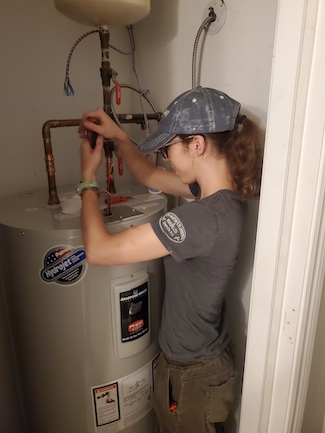 Contractors need to prepare for a significant shift to heat pump water heaters, condensing commercial gas water heaters, and condensing boilers. Every indication is that is what the DOE will require, and several states are moving in that direction even faster and more aggressively. Some municipalities have already banned gas water heaters, and some have announced that they will within the next 5 to 10 years. I would encourage contractors to really dig into the regulations pending in their market area and prepare accordingly.
Contractors need to prepare for a significant shift to heat pump water heaters, condensing commercial gas water heaters, and condensing boilers. Every indication is that is what the DOE will require, and several states are moving in that direction even faster and more aggressively. Some municipalities have already banned gas water heaters, and some have announced that they will within the next 5 to 10 years. I would encourage contractors to really dig into the regulations pending in their market area and prepare accordingly.
As it relates to contractors, what is your “message” to them as it relates to your company and its line of products and services? Last year, Bradford White celebrated the 30th anniversary of our commitment to the professional installation of our products. As stated in those messages, we will remain “For the Pro” with the products, services and support we bring to our contractor customers. We will strive to continue to be your best partner for success in your business.
MH: What specifically does BW have its sights set on in 2023? (New products, working with assocs. for workforce development, etc.)
Carnevale: Despite some of the headwinds that still exist with regard to the supply chain and the economy, we are excited about 2023. As you know, toward the end of last year, we released our new formula for Vitraglas tank lining where it now includes Microban. The excitement around that has been tremendous and we expect Vitraglas with Microban to help our customers win against the competition in both residential and commercial water heaters. We also have several other new products that launched in 2022 and even more to be announced in 2023.
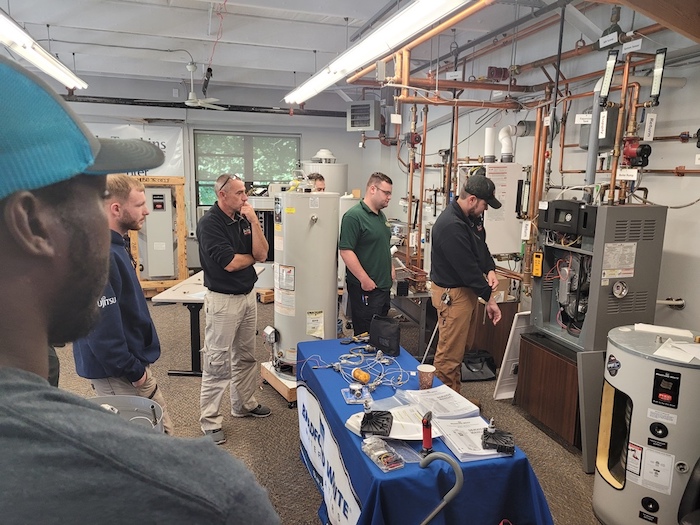
We are also excited to be expanding the reach of our Industry Forward (IF) program, which was created to put a focus on the wonderful career opportunities available in our industry. As you know, all of us in this industry have workforce challenges so we expect to get more traction for IF in 2023 to shine a brighter spotlight on this challenge and increase awareness of our industry’s career opportunities to the general public.
Leading water heating and storage manufacturer’s Vitraglas® tank lining is now infused with Microban® antimicrobial technology, setting a new industry standard for protection. Ambler, Pa. —Bradford White Corporation, an industry-leading American manufacturer of water heaters, boilers and storage tanks, announces that its proprietary Vitraglas® tank lining will now incorporate Microban® antimicrobial technology to provide additional Read more
Leading water heating and storage manufacturer’s Vitraglas® tank lining is now infused with Microban® antimicrobial technology, setting a new industry standard for protection.
Ambler, Pa. —Bradford White Corporation, an industry-leading American manufacturer of water heaters, boilers and storage tanks, announces that its proprietary Vitraglas® tank lining will now incorporate Microban® antimicrobial technology to provide additional protection against the growth of bacteria, mold and mildew on the surface of the interior tank lining.
“We’re delivering unprecedented protection that no other water heater manufacturer can offer,” said Louise Prader, senior director of product management for Bradford White. “Microban® antimicrobial product protection* enhances the premium protection of our Vitraglas® technology and offers our customers an additional layer of protection.”
Bradford White water heaters are the only water heating products that offer residential and commercial customers this additional level of tank protection at no additional charge. This innovation is a direct outcome of Bradford White’s ongoing research and development efforts in response to a wide range of market, technology, regulatory and environmental trends.
Vitraglas® tank lining with Microban® antimicrobial product protection is now a standard feature on tank-type water heaters from Bradford White. Vitraglas® prolongs the life of the water heater by keeping corrosive elements from reaching the steel of the tank and other components. The addition of Microban® antimicrobial technology protects the Vitraglas® tank lining against the growth of bacteria, mold and mildew on the surface of the lining.
The Microban® antimicrobial technology is integrated into the Vitraglas® formula and then applied to the inside of the tank, coils and/or flue tubes during the manufacturing process. After application, the Vitraglas® lining is baked on at approximately 1,600 degrees for a hardened, long-lasting finish. Through this exclusive manufacturing process, the Microban® antimicrobial technology becomes a permanent part of the coating that continues its protection for the lifetime of the water heater.
Antimicrobials have been safely used for many years. The Microban® antimicrobial technology used in Bradford White products is silver-based, which has been used for decades in a range of applications, and carries both the EPA and European Union approval for direct food contact.
Microban® has been a trusted brand and leader in antimicrobial technologies since 1984. Their technologies can be found in thousands of consumer and industrial products around the world, including a variety of plumbing fixtures and household appliances.
For more information about Microban®, visit https://www.microban.com.
For more information about Bradford White Corporation, visit https://www.bradfordwhitecorporation.com.

Industry leader provides hot water solutions to affordable housing community in historic South Carolina neighborhood A. O. Smith, a leader in water heating and water treatment, announces the donation of 26 heat pump water heaters to Habitat for Humanity of Greenville County in South Carolina. This donation will support the creation and growth of affordable Read more
Industry leader provides hot water solutions to affordable housing community in historic South Carolina neighborhood
A. O. Smith, a leader in water heating and water treatment, announces the donation of 26 heat pump water heaters to Habitat for Humanity of Greenville County in South Carolina. This donation will support the creation and growth of affordable housing by providing reliable access to hot water in the historic Nicholtown neighborhood.
Recent development in the area has led to a reduction in affordable housing. The city donated a five-acre plot of land to Habitat for Humanity Greenville County to build new housing options to preserve this historic community. Habitat Homeowners pay no more than 30% of their income at the time they buy their house. A. O. Smith’s heat pump water heater donation will help homeowners keep utility costs down throughout their homeownership.
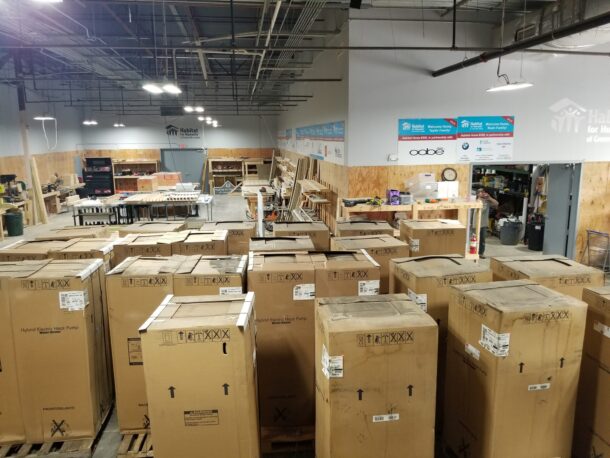
“Because of generous donors like A. O. Smith, we will be able to ensure current and future generations of Nicholtown residents continue to have a home here,” said Nöel Brooks, director of development for Habitat for Humanity Greenville County. “A. O. Smith’s thoughtful donation of heat pump water heaters will have a tremendous impact on the long-term affordability of our homes by providing residents with utility cost savings.”
A.O. Smith chose to donate heat pump water heaters because of their cost savings and efficiency benefits. A. O. Smith heat pump water heaters can save a family of four an average of $300 per year on their electric bills — an enormous impact for regions like the southeast, where electric bills typically run high. Heat pump water heaters are 75% more efficient than traditional water heaters, using significantly less energy.
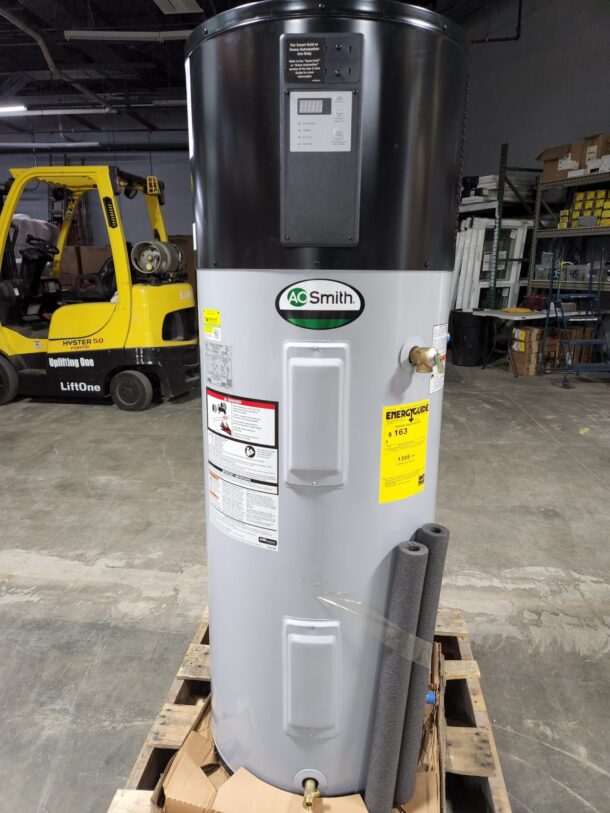
“One of our core guiding principles at A. O. Smith is to serve our communities, and we are incredibly grateful to have the opportunity to provide water heating solutions to the Greenville community,” said Bill Hosken, A. O. Smith national market development manager. “While heat pump water heaters aren’t necessarily new technology, they’ve become the most efficient solution on the market to meet and exceed homeowner’s water heating needs while keeping costs low.”
Construction in the community officially began earlier this year and the community’s first residents are expected to move into their new homes later this year. The entire community is estimated to take three years to complete, and by the end of construction, there will be more than 20 new homes for community members in need.
To learn more about A. O. Smith’s product offerings, visit www.hotwater.com.
